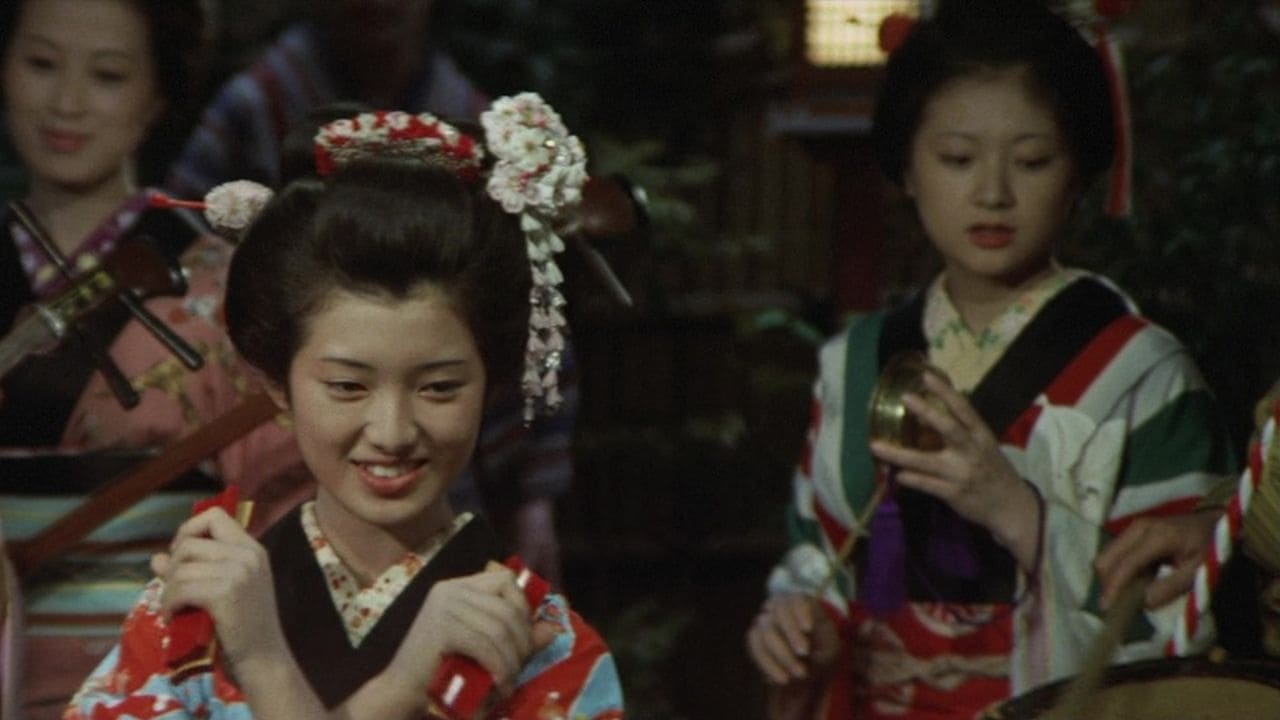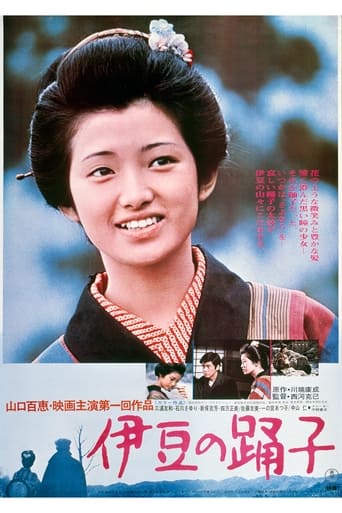Murphy Howard
I enjoyed watching this film and would recommend other to give it a try , (as I am) but this movie, although enjoyable to watch due to the better than average acting fails to add anything new to its storyline that is all too familiar to these types of movies.
Brian Camp
IZU NO ODORIKO (The Izu Dancer, 1974) is a feature-length adaptation, in color and widescreen, of a famous Japanese story written by Yasunari Kawabata and published in 1927. The story is 21 pages long, at least in the version translated into English by Edward Seidensticker and published by Tuttle Publishing. It describes an encounter between a male student traveling through the Izu Peninsula of Japan during the final days of his vacation and a family of wandering entertainers. One of the family is a dancing girl of 13 and she and the boy, instantly drawn to each other, seek ways to make the most of the few days their paths cross. It's all quite innocent and the girl's guardian (the mother-in-law of the girl's brother) seems somewhat indulgent at first, but turns less so by the end of the trip. Written in the first person by the student, the story comes off as a wistful reminiscence of a youthful travel made pleasant by the attention received from a rare beauty. The story has been filmed many times and I've seen four versions of it, three of them live-action. The best is arguably an animated half-hour made in 1986 as part of the "Animated Classics of Japanese Literature" TV series (also reviewed on this site). In fact, the image featured above on this particular IMDb page comes from the VHS edition of "Animated Classics" that featured the "Izu Dancer" episode. It has nothing to do with the 1974 film version of the story. I watched this version on a DVD that was in Japanese with no subtitles. Since I'd read the story and seen the subtitled animated version, it wasn't that hard to follow. I had also just seen the 1963 film starring Sayuri Yoshinaga (also reviewed on this site), which was made by the same filmmaker and on which this version was closely modeled, complete with long dialogue scenes and subplots designed to pad out the story to feature-film length. The big difference here is in the performance of the leading female role, that of the Izu dancer. Here she's played by singing star Momoe Yamaguchi not long after her emergence as the reigning pop queen in Japan in the 1970s. Ms. Yamaguchi adds a sadder, darker quality to her portrayal of Kaoru, the dancing girl. She has a bigger smile, a more ready laugh and more expressive emotions than Ms. Yoshinaga, but she suffers disappointment more visibly and is much more melancholic overall. Yoshinaga seemed almost ethereal at times, while Yamaguchi has a much earthier quality. The cinematography and set design in this film are not as pretty as they were in the 1963 version. There was a sunny, airy quality to the look and feel of that film and a more optimistic tone. Here, in the 1970s manner, things are darker and grittier, and the colors are not as bright. The human behavior is no better. While each of the filmed versions I've seen features some harassment of the dancing girl by drunken patrons, something not even hinted at in the story, the character suffers a lot more groping by older men here than in any other version I've seen. Even though it reflects the sad reality of the abuse traveling performers, particularly young girls, would have been subjected to, it's somewhat disconcerting, especially when one considers that Ms. Yamaguchi was 15 at the time of the shoot. The ending is unusually bleak.There's a title song performed by the star over the opening credits, which is then reprised about an hour into the film during a sequence showing the group's travels. There are a few scenes showing the family performing. This was Ms. Yamaguchi's first film. She plays up the adolescent angst that's only hinted at in the short story, resulting in a deeply affecting performance. There's a scene where she's anxiously awaiting the student's arrival at the inn where she's staying and she crafts origami birds while she's waiting. The origami was used in the 1963 version but is not in the original story. The unique touch here is that her eagerness compels her to toss one of the birds from the window to fall at the feet of the first guy in a student uniform to walk by, only to be embarrassed when she realizes it's the wrong student. It's a wordless sequence, with the emotions played out entirely on her face. The dancer seems much more attached to the boy here than even the character in the original story. (The actor who plays the student, Tomokazu Miura, would be Ms. Yamaguchi's frequent co-star in movies and television in the subsequent six years and the two would eventually marry, prompting Yamaguchi's retirement from show biz in 1980 at the ripe age of 21!)Yamaguchi was the dominant recording star in Japan from 1973 to 1980. She had an ability, far beyond her years, to summon up ancient emotions, to evoke a timeless quality that transcends the whole notion of "pop." Whenever I listen to her songs or watch her performances in films or TV dramas, I'm amazed that a performer so young had such sensitivity and expressiveness. I've never seen or heard anyone else like her. The Japanese DVD of this film comes with a trailer for "Shiosai" (The Sound of Waves) a 1975 film starring Ms. Yamaguchi and Mr. Miura and based on a novel by Yukio Mishima, plus a poster gallery of 14 films, presumably all starring the two performers.

